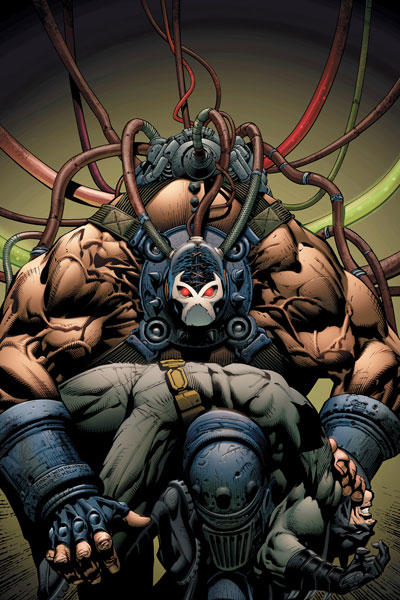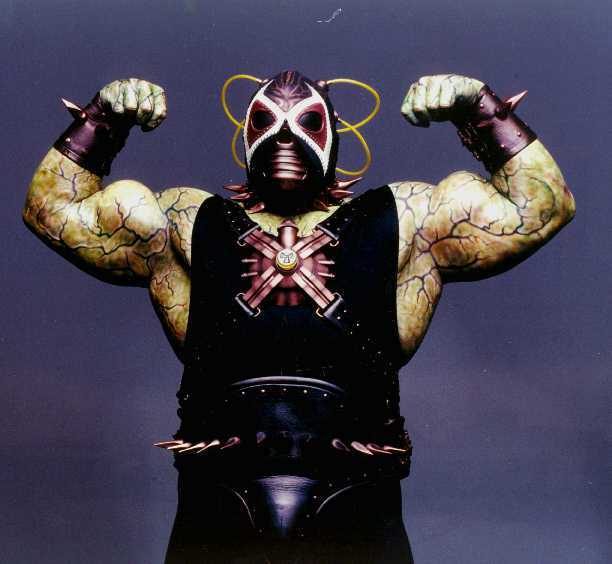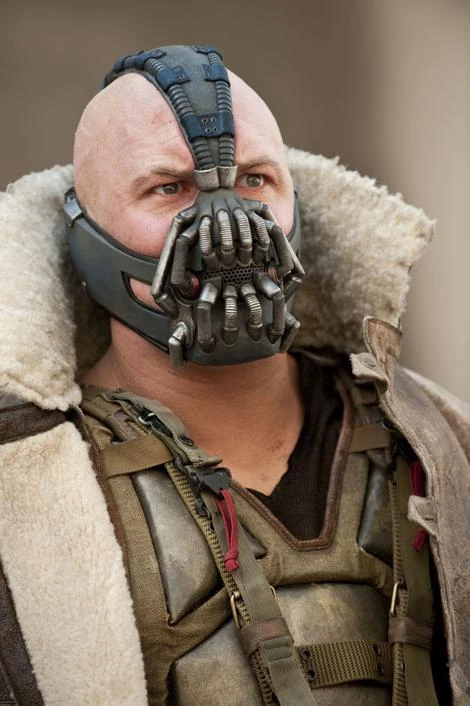There are few things in life that equal the ridiculous concept of Godzilla in Hell. Yet, this concept is the foundation of a wonderful comic miniseries that tells the story of Godzilla as he traverses through the different circles of Hell. When I first heard about this series I immediately was intrigued and wanted to learn everything I could about this comic book series. When Christmas came, I finally got the chance to get the complete volume as published by IDW. And the result? I love it. It wasn’t what I expected and that’s what makes it good. Godzilla in Hell’s risky departure from the normal, Monster-of-the-Week formula, makes this series a must read for fans of the Big G.
Image from issue 1. Art done by James Stokoe.
Unfortunately, those looking for a straight-forward narration similar to Godzilla and the Fifty Year War (done by James Stokoe who also penned the first issue in Godzilla in Hell) will be disappointed as narration is kept to a minimum, if at all, and some issues have many pages completely devoid of dialogue. As such, the reader shoulders a great deal of interpretation that would otherwise be spoon fed to him. This lack of exposition makes the series strong as I feel a word-by-word explanation of Hell would only detract from the experience and not enhance the other worldly feel of this abysmal world.
Each issue is also done by a different artist and as such we see radical shifts in styles throughout the series. The aforementioned lack of dialogue means the artists are given almost free reign over the pages without worrying too much about spacing problems. Whole pages are dedicated to scenery and battles and it’s amazing. Stokoe’s Godzilla still looks good as usual but I have to give a hand to Eggleton’s Godzilla as his issue is entirely painted and he makes a damn fine looking Godzilla.

Image from Issue 2. Art done by Bob Eggleton.
The multitude of artists leads to the most interesting thing about Godzilla in Hell and that’s the self-contained stories in each issue. Rather than one continuous arc, the miniseries is comprised of many tales that you could easily interpret as stand alone rather than interlocking. It strikes me as the old epics in literature like the Odyssey; here is another tale of Godzilla and his never-ending journey through Hell. This further lends fuel to the reader’s interpretation fire and allows us to enjoy Godzilla in Hell in a variety of ways.
With only five issues, I can’t help but analyze each of them and try to understand what the artist was trying to convey to the reader and what it means overall. In issue one, we are given a snapshot of Godzilla’s initial fall to Hell. The silence of the fall and the impact lends to the eeriness of the setting. Philip Glass’ opus Koyanassqui plays in the background in my head as I watch the King of Monsters recover and set forth. After Godzilla blows up Hell’s famous entrance sign, he encounters an avalanche of naked people who swarm him like an immense tidal wave. Are these the souls of the damned? Or souls whom Godzilla has killed in the living world? I think it’s the latter as they form a splitting image of Godzilla himself before transforming into a demonic-being that is a cross between Godzilla and Biollante. In a way, this weird monster reminds me of Shin Godzilla and how the collective power of Humanity was able to stop him and not some giant monster. Unfortunately, for this monster, Godzilla destroyed it with one mighty blast and moved forward on his journey.
The return of Rodan, Ghidorah, Anguirus, and Varan highlights the painted issue two. Demons now posses Rodan and Anguirus who now reside in Hell for eternity. Eggleton cleverly references their origin stories as Rodan first appearance was from a volcano while Anguirus’ was trapped in ice. Since Godzilla did not kill either of them (or Varan) I would wager he recognized them and did not want to kills their incarnations

image provided by snappow.com. From Issue 3, art done by Buster Moody.
Issue three reveals how Godzilla fell to Hell in the first place and it’s probably the most fascinating chapter of the five although the other chapters give it a run for its money. I had to read the chapter twice before I realized that Godzilla actually went to Heaven first before he rejected it and was sent to Hell in response. In fact, it took me awhile to realize that the angel’s wings were similar to Mothra’s! In Godzilla lore, this makes a lot of sense considering Mothra is basically the Earth’s Guardian.
There’s a quote from the epic poem “Paradise Lost” that I’m sure issue three parodies which goes “Better to reign in Hell, than serve in Heaven.” Unlike virtually all mortal beings, Godzilla has the power to reject Heaven and in response, Heaven sends Godzilla down to Hell. Yet after he defeats Space Godzilla, he rejects ruling Hell as well. As such, Godzilla takes a third, unscripted option that stuns the denizens of both worlds. Better to live on Earth.
I just love these issues as they are all so different in style and tone. Wonderful as they are, issue four stands above the rest as Godzilla finally meets his match through his arch nemeses King Ghidorah and Destroyah in a Hellish version of Tokyo. As much as I love the previous issue, Godzilla never faced a total sense of doom, depression, hopelessness and torment. Sure, he may have had problems with the Lust monster or Space Godzilla, but he prevailed nonetheless in relatively short battles. Issue four changes that and gives us scenes of constant battle. Scenes of Godzilla fighting and killing Ghidorah and Destroyah again and again. Scenes of Godzilla killed again and again. And scenes of Godzilla trying to break through the wall in vain again and again. We have seen Godzilla in Hell but never Godzilla in his own Hell.
Godzilla is truly a force to be reckon with but to finally find something that stops him is unbelievable. I would argue that this issue, and not issue five, truly tests Godzilla’s spirit. With no narration, we are unsure how long Godzilla has suffered. Months? Years? Godzilla’s eternal damnation may be similar to Dante’s version of Hell where the passing of time is inconsequential; it’s happening for now and forever. As such, I can’t help but applaud Godzilla’s escape; he broke through eternity. And as Godzilla leaves his Hell, Destroyah and Ghidorah, mere tools of his damnation, slowly disappear along with the faux-city of Tokyo.

Image from Issue 5. Art by Dave Wachter
In the final issue, Godzilla has to climb an incomprehensibly steep and tall mountain where he can finally escape Hell. Out of all the issues, this one is the hardest to interpret. Why does Godzilla’s atomic breath fail? What is the giant monster on top of the gate? Why do the winged demons reform into Godzilla after eating him (and why do they all now have eyeballs) and why can they now release a full atomic blast? Although I can’t answer all of these questions, what I can suggest is that Godzilla’s indomitable spirit and will to succeed has brought him back from the dead and made him stronger.
Questions aside, this is a gorgeous looking issue. I love the lighting effects and the predominance of black and red. I feel like issue five’s Hell is like an abyss, devoid of light but not devoid of action. The lightning in the clouds was done rather well and the formidable mountain looked foreboding. This contrasts amazingly well with the last panel of Godzilla escaping Hell and he’s released onto the surface of the Earth, breaking through the ocean and taking his first breath of freedom. Godzilla never looked so content.
Overall, Godzilla in Hell is a great comic and I recommend all Godzilla fans to read it. It’s a different take for the King of All Monsters and it works well. Check it out.


























